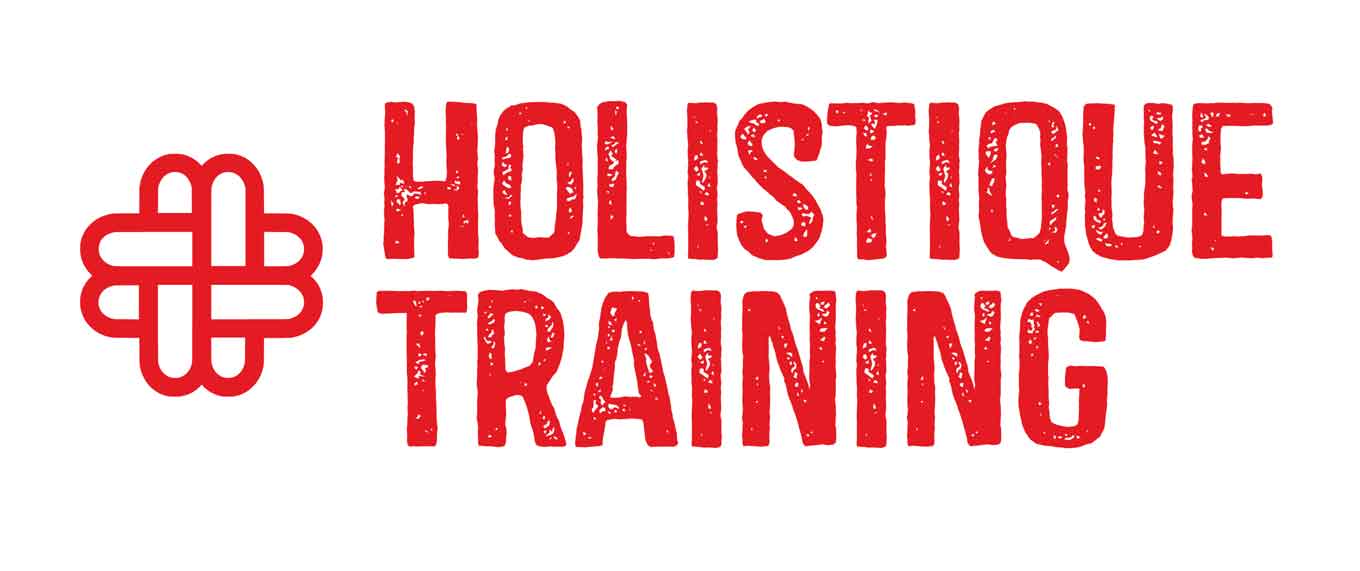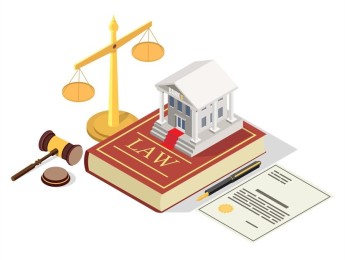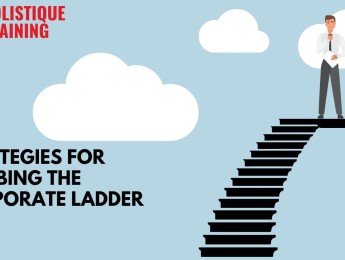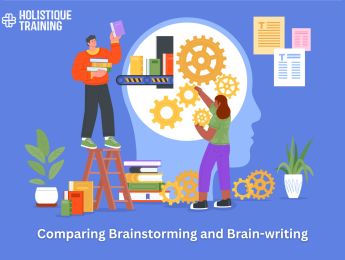- Table of Contents
- Introduction
- What is Scenario Planning?
- The Types of Scenario Planning
- 1. Exploratory Scenarios
- 2. Normative Scenarios
- 3. Quantitative Scenarios
- 4. Qualitative Scenarios
- 5. Operational Scenarios
- 6. Strategic Scenarios
- Benefits of Scenario Planning
- 1. Enhanced Strategic Agility
- 2. Improved Decision-Making
- 3. Anticipation of Disruptions
- 4. Encourages Innovation
- 5. Strengthens Organizational Resilience
- 6. Aligns Teams and Stakeholders
- 7. Reduces Risk While Seizing Opportunities
- 8. Promotes Long-Term Thinking
- Scenario Planning vs. Business Continuity Planning
- How to Perform a Scenario Analysis
- 1. Define the Scope
- 2. Identify Key Drivers of Change
- 3. Analyze Uncertainties
- 4. Develop Scenarios
- 5. Assess Implications
- 6. Develop Strategies
- 7. Monitor and Update
- Tips for a Successful Scenario Analysis and Planning
- 1. Engage Diverse Perspectives
- 2. Focus on Key Uncertainties
- 3. Ensure Scenarios Are Plausible and Distinct
- 4. Encourage Creativity and Open-Mindedness
- 5. Align Scenarios with Strategic Goals
- 6. Develop Actionable Strategies
- 7. Communicate Effectively
- 8. Review and Update Regularly
- Challenges of Scenario Planning
- 1. Complexity and Time-Intensiveness
- 2. Difficulty in Identifying Key Uncertainties
- 3. Bias and Assumptions
- 4. Overemphasis on Worst-Case Scenarios
- 5. Lack of Stakeholder Engagement
- 6. Uncertainty in Scenario Outcomes
- 7. Challenges in Translating Scenarios into Actionable Strategies
- 8. Resistance to Change
- 9. Difficulty in Monitoring and Updating Scenarios
- Example of a Scenario Analysis
- Conclusion
Introduction
Uncertainty is an inevitable part of life, and nowhere is this more evident than in the world of business, where market shifts, technological advancements, and unforeseen crises can disrupt even the most carefully laid plans. How do organizations prepare for an uncertain future? One powerful tool is scenario planning—a strategic method that enables businesses to anticipate various potential futures and develop strategies to navigate them effectively.
This blog post delves into the concept of scenario planning, exploring its definition, types, benefits, and practical applications. We’ll also compare it to business continuity planning, walk through the steps of conducting a scenario analysis, and offer tips for success. Finally, we’ll examine some challenges associated with scenario planning and provide an example of how it works in practice, complete with a scenario planning matrix. By the end, you’ll have a comprehensive understanding of scenario planning and how it can help organizations thrive in an unpredictable world.
What is Scenario Planning?
Scenario planning is a strategic planning method used to explore and prepare for possible future scenarios. Unlike traditional forecasting, which often relies on linear projections of current trends, scenario planning acknowledges the inherent uncertainty of the future and considers multiple plausible outcomes. It challenges organizations to think beyond their immediate assumptions and imagine how different external factors—such as economic conditions, technological advancements, regulatory changes, or social trends—might interact to shape the future.
At its core, scenario planning is not about predicting the future but preparing for it. By creating and analyzing a range of scenarios, organizations can identify risks, opportunities, and strategies that remain robust across different possibilities. This approach enables decision-makers to be more agile and resilient, even when faced with unexpected disruptions.
The Types of Scenario Planning
Scenario planning is not a one-size-fits-all approach. Depending on the context and goals, organizations can use different types of scenario planning to suit their needs. Here are six common types:
Scenario planning is a versatile tool, and its effectiveness depends on tailoring it to the specific needs of an organization or situation. Different types of scenario planning serve different purposes, depending on the goals, time horizons, and uncertainties involved. Below, we take a closer look at each of the six types of scenario planning, providing more detail about their applications and significance.
1. Exploratory Scenarios
Exploratory scenarios are designed to investigate a wide range of possible futures without assuming any particular outcome. This type of scenario planning is often used when the future is highly uncertain, and there are multiple forces at play that could shape it. By exploring various possibilities, organizations can better understand the range of outcomes they might face and prepare accordingly.
For example, a tech company entering a new market might use exploratory scenarios to analyze how factors like regulatory changes, customer preferences, and competitor strategies could interact. These scenarios don’t aim to predict a single future but instead allow the company to consider diverse possibilities, helping them remain agile in their approach.
Key Use Cases:
- Long-term strategic planning in industries with high uncertainty (e.g., energy, technology, or healthcare).
- Exploring the impact of emerging trends or disruptive technologies.
- Assessing potential geopolitical or environmental changes.
2. Normative Scenarios
Unlike exploratory scenarios, normative scenarios are goal-oriented. They focus on envisioning a desired future and mapping out the steps necessary to achieve it. This type of scenario planning is particularly useful for organizations with clear objectives, such as achieving sustainability targets, expanding into new markets, or improving operational efficiency.
For instance, a city planning committee might use normative scenarios to design pathways toward becoming a "smart city" by 2030. They would identify the technologies, policies, and investments required to reach this goal, as well as potential obstacles along the way.
Key Use Cases:
- Setting and achieving long-term organizational goals (e.g., carbon neutrality, market leadership).
- Strategic initiatives requiring coordinated efforts across multiple stakeholders.
- Visionary projects that involve shaping the future rather than reacting to it.
3. Quantitative Scenarios
Quantitative scenarios rely on numerical data and models to project potential outcomes. These scenarios are particularly useful in industries where measurable variables—such as market demand, interest rates, or resource availability—play a significant role in decision-making. By using statistical tools and simulations, organizations can create data-driven scenarios that provide a more concrete understanding of potential futures.
For example, an investment firm might use quantitative scenarios to project the impact of different economic conditions on their portfolio. By analyzing variables like GDP growth, inflation rates, and market volatility, they can identify strategies that minimize risk and maximize returns.
Key Use Cases:
- Financial planning and risk management.
- Supply chain optimization based on demand forecasting.
- Industries heavily reliant on data, such as finance, logistics, or manufacturing.
4. Qualitative Scenarios
In contrast to quantitative scenarios, qualitative scenarios focus on storytelling and narrative-building. They rely on descriptive analysis rather than hard data, making them particularly effective for brainstorming sessions, workshops, or situations where creativity and collaboration are key. Qualitative scenarios encourage participants to think beyond numbers and imagine how social, cultural, and psychological factors might shape the future.
For instance, a marketing team might create qualitative scenarios to explore how shifting consumer behaviors could affect their brand. By crafting detailed narratives about different customer personas and their preferences, the team can develop strategies that resonate with their target audience.
Key Use Cases:
- Encouraging creative thinking and innovation.
- Understanding the human and cultural dimensions of change.
- Collaborative planning sessions involving diverse stakeholders.
5. Operational Scenarios
Operational scenarios are focused on short-term, tactical decisions. They are often used to address specific challenges or opportunities that require immediate action. This type of scenario planning is particularly valuable for organizations operating in dynamic environments, where quick responses to changing conditions are essential.
For example, a retailer might use operational scenarios to prepare for disruptions during the holiday shopping season. They could analyze scenarios involving supply chain delays, unexpected surges in demand, or cybersecurity threats, allowing them to develop contingency plans and allocate resources effectively.
Key Use Cases:
- Crisis management and contingency planning.
- Short-term decision-making in fast-changing environments.
- Industries with high operational complexity, such as retail or logistics.
6. Strategic Scenarios
Strategic scenarios are designed for long-term decision-making and are typically used by senior leaders to guide high-level organizational strategies. These scenarios consider macro-level trends, such as economic shifts, geopolitical developments, or societal changes, and their potential impact on the organization’s future.
For instance, an automotive company might use strategic scenarios to explore how the rise of electric vehicles, autonomous driving, and changing consumer preferences could reshape the industry over the next decade. By analyzing these scenarios, the company can identify opportunities for innovation and growth while mitigating risks.
Key Use Cases:
- Long-term strategic planning for executives and leadership teams.
- Navigating complex, multi-dimensional challenges.
- Industries undergoing significant transformation, such as automotive, energy, or technology.
Choosing the right type of scenario planning is crucial for achieving your goals. For example, if your organization is focused on long-term innovation, strategic or exploratory scenarios may be the best fit. On the other hand, if you’re addressing an immediate challenge, operational scenarios might be more appropriate. By understanding the nuances of each type, you can tailor your approach to maximize the effectiveness of your scenario planning efforts.
Ultimately, these six types of scenario planning provide a toolkit for organizations to navigate uncertainty and prepare for the future with confidence. Whether you’re exploring unknown territories, setting ambitious goals, or responding to immediate challenges, there’s a type of scenario planning that can help you succeed.
Benefits of Scenario Planning
The benefits of scenario planning extend far beyond risk management. Here are some of the key advantages:
1. Enhanced Strategic Agility
In a world where change is constant, the ability to adapt quickly is a competitive advantage. Scenario planning equips organizations with the flexibility to pivot their strategies as conditions evolve. By preparing for a range of plausible futures, businesses can avoid being caught off guard and respond proactively to unexpected developments. For example, a company that has already explored scenarios involving supply chain disruptions will be better positioned to adapt quickly when such disruptions occur. This agility minimizes downtime and ensures continuity in operations.
2. Improved Decision-Making
Scenario planning encourages organizations to think critically about their assumptions and decisions. By considering multiple scenarios, leaders gain a broader perspective on the potential risks and rewards of their choices. This process reduces the likelihood of "groupthink" and helps decision-makers evaluate options more thoroughly. For instance, a company debating whether to invest in a new technology can use scenario planning to weigh the implications of market adoption rates, regulatory changes, and competitor actions, leading to more informed and confident decisions.
3. Anticipation of Disruptions
One of the most significant advantages of scenario planning is its ability to prepare organizations for disruptions. Whether it’s an economic downturn, a technological breakthrough, or a global crisis, scenario planning helps businesses anticipate and plan for events that could otherwise derail their operations. For example, during the COVID-19 pandemic, organizations that had previously considered scenarios involving remote work and digital transformation were able to adapt more quickly than those that had not.
4. Encourages Innovation
Scenario planning pushes organizations to think outside the box and imagine futures that may seem unlikely or unconventional. This process fosters creativity and innovation, as it challenges teams to envision new ways of operating, serving customers, or solving problems. For instance, a company exploring scenarios about the future of transportation might uncover opportunities to develop entirely new products or services, such as autonomous vehicle software or mobility-as-a-service platforms.
5. Strengthens Organizational Resilience
Resilience is the ability to withstand and recover from challenges, and scenario planning plays a vital role in building it. By preparing for a variety of outcomes, organizations can develop contingency plans and identify strategies that are robust across multiple scenarios. This proactive approach ensures that businesses are not only prepared for the worst but also capable of thriving in uncertain environments. For example, a manufacturer that plans for both increased and decreased demand can adjust production levels more efficiently, minimizing losses during downturns and capitalizing on surges.
6. Aligns Teams and Stakeholders
The collaborative nature of scenario planning brings people together, fostering alignment and shared understanding among teams and stakeholders. By involving individuals from different departments and levels of the organization, scenario planning ensures that diverse perspectives are considered. This process not only improves the quality of the analysis but also helps build consensus around strategies and priorities. For example, a cross-functional team participating in scenario planning might align on a shared vision for the company’s future, reducing internal conflicts and ensuring smoother implementation of strategies.
7. Reduces Risk While Seizing Opportunities
In addition to mitigating risks, scenario planning helps organizations identify and capitalize on opportunities that might otherwise go unnoticed. By exploring different futures, businesses can uncover potential markets, partnerships, or innovations that align with emerging trends. For instance, a consumer goods company analyzing scenarios involving environmental regulations might discover opportunities to develop sustainable products, gaining a competitive edge while complying with future laws.
8. Promotes Long-Term Thinking
In fast-paced industries, it’s easy to get caught up in short-term goals and lose sight of the bigger picture. Scenario planning encourages organizations to think beyond immediate challenges and consider the long-term implications of their decisions. This perspective helps businesses stay focused on their overarching mission and vision, even as they navigate day-to-day uncertainties. For example, a renewable energy company might use scenario planning to evaluate how global energy transitions will unfold over the next 20 years, ensuring that their investments align with long-term trends.
Scenario planning is more than just a tool for managing uncertainty—it’s a strategic approach that empowers organizations to make better decisions, foster innovation, and build resilience. By leveraging these benefits, businesses can position themselves for success in an ever-changing world.
Scenario Planning vs. Business Continuity Planning
While scenario planning andbusiness continuity planning (BCP) share some similarities, they serve distinct purposes. Scenario planning is a forward-looking, strategic tool that explores potential futures and guides long-term decision-making. In contrast, BCP focuses on ensuring operational stability during and after a specific disruption, such as a natural disaster or cyberattack.
Think of scenario planning as preparing for a variety of potential journeys, while business continuity planning ensures you have a spare tire in case of a flat. Both are important, but they address different aspects of organizational preparedness.
Aspect | Scenario Planning | Business Continuity Planning (BCP) |
Primary Focus | Exploring multiple potential futures and preparing strategic responses | Ensuring operational stability during and after specific disruptions |
Time Horizon | Long-term (years to decades) | Short-term (immediate to months after a disruption) |
Purpose | To anticipate and adapt to a range of possibilities, including opportunities | To maintain critical operations and recover quickly from disruptions |
Approach | Strategic and exploratory | Tactical and reactive |
Scenarios Considered | Broad and varied, including best-case, worst-case, and alternative futures | Focused on specific, high-probability disruptions (e.g., natural disasters, cyberattacks) |
Examples of Use Cases | Preparing for technological advancements, market shifts, or geopolitical changes | Responding to power outages, supply chain disruptions, or IT failures |
How to Perform a Scenario Analysis
Performing a scenario analysis involves several steps. Here’s a step-by-step guide:
1. Define the Scope
Start by clearly defining the purpose of the scenario analysis. What decision, issue, or goal are you addressing? This step sets the foundation for the entire process and ensures that the analysis remains focused and relevant.
Key Questions to Ask:
- What is the specific problem or opportunity we’re addressing?
- What is the time horizon for the analysis (e.g., 5 years, 10 years)?
- Which areas of the business or organization will be impacted?
For example, a company may define its scope as preparing for the future of its supply chain over the next decade, focusing on potential risks such as geopolitical tensions, climate change, and technological disruptions.
2. Identify Key Drivers of Change
Next, identify the external and internal factors that could influence the future. These factors, known as "drivers," can include economic trends, technological advancements, regulatory changes, social dynamics, and environmental shifts.
Steps to Identify Drivers:
- Conduct aPESTLE analysis (Political, Economic, Social, Technological, Legal, Environmental) to identify external factors.
- Consult with stakeholders, industry experts, and cross-functional teams to gather diverse perspectives.
- Focus on drivers that are both highly uncertain and have a significant impact on the organization.
For instance, in the automotive industry, key drivers of change might include the pace of electric vehicle adoption, government regulations on emissions, and advancements in autonomous driving technology.
3. Analyze Uncertainties
Not all drivers of change are equally uncertain or impactful. The next step is to prioritize the drivers based on their level of uncertainty and their potential impact on the organization. These prioritized drivers will form the basis of your scenarios.
How to Analyze Uncertainties:
- Use a matrix to map drivers based on their level of uncertainty (low to high) and impact (low to high).
- Focus on the drivers in the "high uncertainty, high impact" quadrant, as these are the most critical for scenario planning.
For example, a retail company might identify "consumer preference for online vs. in-store shopping" and "economic recovery post-recession" as high-impact, high-uncertainty drivers.
4. Develop Scenarios
With the key uncertainties identified, the next step is to create a set of distinct scenarios. Each scenario represents a plausible future based on how the key drivers might evolve. Aim to create 3-4 scenarios to avoid oversimplifying or overcomplicating the analysis.
Steps to Develop Scenarios:
- Combine the key drivers in different ways to create unique narratives.
- Ensure each scenario is internally consistent (i.e., the drivers and outcomes align logically).
- Give each scenario a descriptive name to make it easier to communicate (e.g., "Tech Boom," "Green Revolution," "Economic Stagnation").
For instance, a technology company might create scenarios such as:
- Scenario 1: Rapid AI adoption disrupts traditional industries.
- Scenario 2: Regulatory restrictions slow down AI innovation.
- Scenario 3: Global economic downturn delays AI investments.
5. Assess Implications
Once the scenarios are developed, analyze their implications for your organization. This step involves evaluating the risks, opportunities, and strategic challenges associated with each scenario.
Key Questions to Answer:
- What risks does this scenario pose to our organization?
- What opportunities could we capitalize on in this scenario?
- How would our current strategies hold up in this future?
For example, a pharmaceutical company might assess how each scenario affects its R&D pipeline, regulatory compliance, and market demand for new drugs.
6. Develop Strategies
Based on the implications of each scenario, identify strategies that are robust across multiple futures. These are often referred to as "no-regret" strategies because they provide value regardless of which scenario unfolds. Additionally, consider contingency plans for scenario-specific risks.
Types of Strategies to Consider:
- Core Strategies: Actions that remain effective across all scenarios.
- Scenario-Specific Strategies: Tailored responses for particular scenarios.
- Contingency Plans: Backup plans for worst-case outcomes.
For example, a company might decide to invest in digital transformation (a core strategy) while preparing contingency plans for potential supply chain disruptions in a specific scenario.
7. Monitor and Update
Scenario planning is not a one-time exercise. The final step is to continuously monitor the external environment and update your scenarios as new information becomes available. This ensures that your strategies remain relevant and effective over time.
How to Monitor and Update:
- Track key indicators related to your drivers of change (e.g., market trends, regulatory developments).
- Regularly revisit and refine your scenarios to reflect new data or emerging trends.
- Engage stakeholders in periodic reviews to maintain alignment and buy-in.
For instance, an energy company monitoring global oil prices and renewable energy adoption rates might adjust its scenarios annually to reflect changing market dynamics.
Tips for a Successful Scenario Analysis and Planning
To get the most out of scenario planning, keep these tips in mind:
1. Engage Diverse Perspectives
Involving individuals from different departments, levels, and areas of expertise ensures a comprehensive understanding of potential drivers and outcomes. Diverse perspectives help identify blind spots, challenge assumptions, and generate creative ideas that may not emerge from a single viewpoint. This diversity enriches the process and leads to more robust and well-rounded scenarios.
2. Focus on Key Uncertainties
While it’s tempting to consider every possible factor, focusing on the most critical uncertainties ensures the analysis remains manageable and impactful. Prioritizing high-impact, high-uncertainty drivers allows organizations to concentrate their efforts on the factors that are most likely to shape the future, avoiding wasted resources on less relevant issues.
3. Ensure Scenarios Are Plausible and Distinct
Scenarios should be realistic enough to be actionable while still representing a range of possible futures. It’s important that each scenario is distinct and explores a different combination of key drivers. Overlapping or overly similar scenarios reduce the value of the exercise, while implausible ones can undermine credibility and engagement.
4. Encourage Creativity and Open-Mindedness
Scenario planning is as much about imagining possibilities as it is about preparing for them. Encouraging participants to think outside the box fosters innovation and helps organizations prepare for unconventional or unexpected futures. An open-minded approach ensures that even unlikely but impactful scenarios are considered.
5. Align Scenarios with Strategic Goals
The scenarios developed should be directly tied to the organization’s strategic objectives and decision-making needs. This alignment ensures that the analysis remains relevant and actionable, helping leaders connect the insights gained from scenario planning to their broader goals and priorities.
6. Develop Actionable Strategies
The ultimate purpose of scenario planning is to guide decision-making, so it’s critical to translate scenarios into clear, actionable strategies. These strategies should address both risks and opportunities and provide organizations with a roadmap for navigating uncertainty. Without actionable outcomes, the exercise loses its practical value.
7. Communicate Effectively
The value of scenario planning lies not only in the analysis itself but also in how its findings are communicated. Clear, engaging communication ensures that key stakeholders understand the scenarios, their implications, and the recommended strategies. This builds buy-in and ensures alignment across the organization.
8. Review and Update Regularly
Scenario planning is not a one-time exercise. Regularly revisiting and updating scenarios ensures they remain relevant as new information and trends emerge. This ongoing process allows organizations to adapt their strategies to changing conditions and maintain their preparedness over time.
By following these tips, organizations can enhance the effectiveness of their scenario analysis and planning efforts, ensuring they are well-prepared for a range of possible futures while staying aligned with their strategic objectives.
Challenges of Scenario Planning
Like any strategic tool, scenario planning comes with its challenges. Some common obstacles include:
1. Complexity and Time-Intensiveness
Scenario planning is a detailed and resource-intensive process that requires significant time and effort. Identifying key drivers, analyzing uncertainties, and developing actionable scenarios can be overwhelming, especially for organizations with limited resources. The complexity increases when multiple stakeholders and diverse perspectives are involved, making it challenging to manage the process efficiently.
2. Difficulty in Identifying Key Uncertainties
One of the most critical steps in scenario planning is pinpointing the right uncertainties to focus on. Organizations often struggle to distinguish between factors that are truly uncertain and those that are relatively predictable. Failing to identify the most impactful uncertainties can lead to scenarios that are irrelevant or fail to address critical risks and opportunities.
3. Bias and Assumptions
Human biases and preconceived notions can undermine the effectiveness of scenario planning. Participants may unconsciously favor certain outcomes or dismiss unlikely but impactful possibilities. Over-reliance on past experiences or current trends can also lead to scenarios that lack imagination or fail to account for disruptive changes.
4. Overemphasis on Worst-Case Scenarios
McKinsey reports that 40% of the scenarios developed by companies fail to be effective, often because they place too much focus on improbable events.While it’s important to prepare for risks, an excessive focus on worst-case scenarios can lead to overly pessimistic planning. This may result in defensive strategies that overlook potential opportunities or fail to leverage growth possibilities. Striking the right balance between risk mitigation and opportunity exploration is a common challenge.
5. Lack of Stakeholder Engagement
Scenario planning requires input and buy-in from various stakeholders across the organization. However, getting everyone aligned and actively engaged can be difficult. Without sufficient participation, the process may lack diverse perspectives and fail to gain the organizational support needed for successful implementation.
6. Uncertainty in Scenario Outcomes
Even the most well-crafted scenarios are based on assumptions and projections, which means there’s no guarantee they will accurately predict the future. This inherent uncertainty can make it difficult for organizations to confidently act on the insights generated, especially if decision-makers are risk-averse.
7. Challenges in Translating Scenarios into Actionable Strategies
Developing scenarios is only part of the process; the real value lies in translating them into actionable strategies. Organizations often struggle to bridge the gap between theoretical scenarios and practical decision-making. Without clear guidance on how to respond to different scenarios, the exercise may feel disconnected from real-world needs.
8. Resistance to Change
Scenario planning often challenges the status quo and requires organizations to think differently about the future. This can lead to resistance from individuals or groups who are uncomfortable with uncertainty or reluctant to deviate from established plans. Overcoming this resistance requires strong leadership and effective communication.
9. Difficulty in Monitoring and Updating Scenarios
Scenario planning is not a one-time activity, but organizations often fail to revisit and update their scenarios as conditions change. Keeping scenarios relevant requires ongoing monitoring of key drivers and trends, which can be challenging to maintain over time, especially in fast-paced industries.
By understanding these challenges, organizations can take proactive steps to address them, such as fostering open-mindedness, investing in facilitation expertise, and ensuring strong alignment with strategic goals. Overcoming these obstacles is essential for maximizing the value of scenario planning and navigating uncertainty effectively.
Example of a Scenario Analysis
Let’s consider an example of scenario planning for a retail company preparing for the future of e-commerce. Below is a simplified scenario matrix based on two key uncertainties: the level of technological advancement and consumer preferences for online vs. in-store shopping.
Scenario | Technological Advancement | Consumer Preferences | Description |
Tech Boom | High | Online | Rapid advancements in technology drive a surge in online shopping. |
Balanced Growth | Moderate | Hybrid | Consumers prefer a mix of online and in-store shopping, with steady tech growth. |
Brick-and-Mortar | Low | In-Store | Limited tech growth leads to a resurgence of in-store shopping. |
Disrupted Future | High | In-Store | Advanced technology is available, but consumers resist online shopping. |
For each scenario, the company would identify risks (e.g., supply chain challenges), opportunities (e.g., new revenue streams), and strategies (e.g., investing in omnichannel capabilities).
Conclusion
Scenario planning is an invaluable tool for navigating uncertainty and staying prepared for the future. By examining multiple plausible scenarios, organizations can craft strategies that are not only flexible and innovative but also resilient to unexpected changes. While the process demands effort, collaboration, and commitment, its benefits far outweigh the challenges. It empowers businesses and leaders to anticipate risks, seize opportunities, and make informed decisions in an unpredictable environment.
If you’re a business leader, policymaker, or entrepreneur looking to gain a competitive edge, scenario planning is a skill you cannot afford to overlook. To help you take your strategic planning to the next level, we invite you to enroll in our course,Planning for Continuous Process Improvement. This course equips you with practical tools and proven methodologies to not only master scenario planning but also drive continuous improvement across your organization.
Learn how to identify key uncertainties, develop actionable strategies, and create a culture of adaptability and innovation. With expert guidance and real-world examples, you’ll be empowered to lead your organization through uncertainty and position it for long-term success. Don’t wait for the future to catch you off guard—prepare for it today with ourPlanning for Continuous Process Improvement course!

























